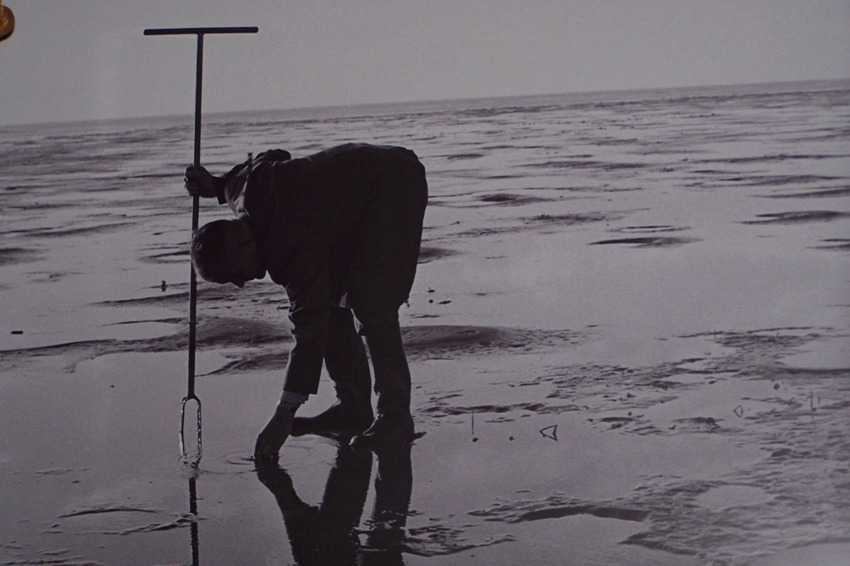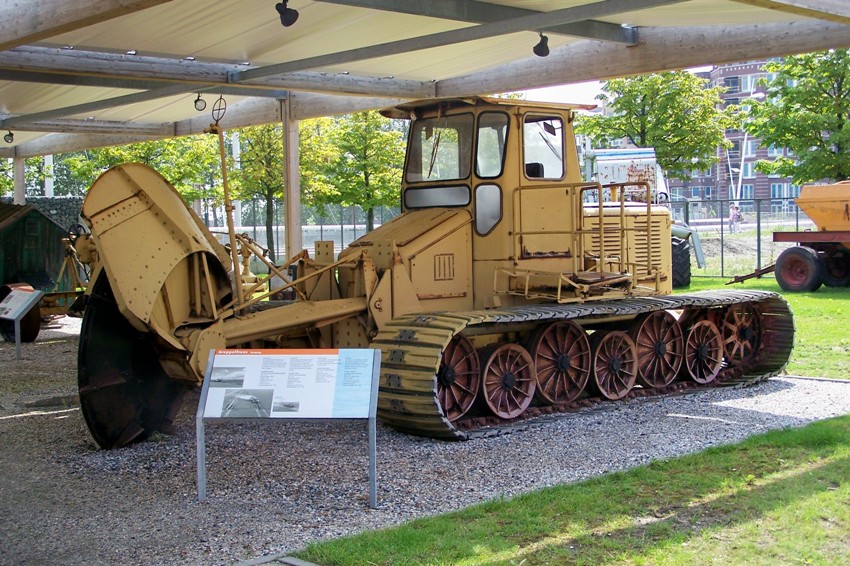Page 1 of 1
How the Dutch turned the sea floor into farmland
Posted: Sun Jul 27, 2008 6:54 pm
by Oscar
There's a museum in Lelystad about how the Dutch turned the sea floor into farm land. The museum has a number of nice exhibits and also a nice collection of the old machines they used for this heavy work.
I post these photos here so that all our overseas members, who may not easily come here to visit the museum, can have a look at this machinery. For everybody in the vicinity of the Low Lands: I highly recommend a visit to this museum - a photo is nothing like the real thing! The museum is well worth a visit!

^---This is what it looked like after all the seawater was pumped over the dike.
One of the first tasks was creating drainage ditches. This is what was used for that:



Posted: Sun Jul 27, 2008 6:57 pm
by Oscar
Posted: Sun Jul 27, 2008 7:02 pm
by Oscar
Posted: Sun Jul 27, 2008 7:06 pm
by Oscar
Posted: Sun Jul 27, 2008 11:32 pm
by Brian
Oscar,
So thats what you did with that big trenching plough you used to pull behind the Dexta

I was over there in the 1980's and took pictures of the plough and one of the Cats hitched to it. I posted it on the board way back. But there was no museum then in the same way, it looks well worth a visit.
The Claas SF brings back memories too. I have spent many hours working on those in the hot sun. Ah those were the days, beer at 6d a gallon and the women faster than the cars

Posted: Mon Jul 28, 2008 3:24 am
by Meanderer
Oscar,
How did they overcome the salt residue after drainage?
Thanks for photos,
Rick
Posted: Mon Jul 28, 2008 7:01 am
by Oscar
Meanderer wrote:How did they overcome the salt residue after drainage?
I'm not exactly sure. Probably by making drainage channels, allowing the rain to flush it out. I guess the deep ploughing also helpen, burying the salty top layer deep down.
Posted: Sat Aug 02, 2008 6:58 pm
by Pascal
Great pictures, Oscar!
Posted: Sun Aug 03, 2008 9:28 pm
by henk
Oscar wrote:Meanderer wrote:How did they overcome the salt residue after drainage?
I'm not exactly sure. Probably by making drainage channels, allowing the rain to flush it out. I guess the deep ploughing also helpen, burying the salty top layer deep down.
Great pictures Oscar,
Wanted to visit the museum about 10 years ago but my wife and the kids had some other plans. As Brian say's it was not a museum like now. The old Bamse (Bollinder Munktell) track tractor was standing outside. I still have a picture from it.
At our museum we also have a trench plow

About the salt, your right Oscar. But they also use crops that cultivate the soil like (please translate this) koolzaad. And every years they would spread (please translate this) ongebluste kalk.
The part were I life was flooded many times with salt water and the farmers had to start all over again many times.
If I ever come round it again I will certainly visit the museum.
Posted: Sun Aug 03, 2008 9:40 pm
by Mark
Oscar or Henk,
Did they fill these ditches back up with drainage tiles or just drain the water out of the place where they pumped the sea water away, and then later on fill them back in.
This is very interesting, good pictures Oscar and Henk.
Posted: Mon Aug 04, 2008 11:26 am
by henk
Hello Mark,
The ditches are still used. The whole of the country is full of them. If it wasn't for those small canals we would not have dry feet’s.
Posted: Mon Aug 04, 2008 5:28 pm
by Brian
I sold tractors to farmers who were reclaiming the marsh in the Kings Lynn area from the sea. There, once the sea was held back, fresh water from the rivers soaked into the land and diluted the salt water. Grass was sown on it in some areas, in others crops of barley and wheat were planted in the ploughed land. For the first year or so production was low but it gradually increased. It is now used to grow wheat and potatoes and is some of the most fertile land in Britain. This is the area that our government want to flood because the sea defences are too expensive to maintain!!!

I demonstrated Fords first TW 4WD down there with a Dowdeswll six firrow plough, ploughing through running "creeks". The tractor was shown at a Ransomes Demo some months before it was released to the press. My boss and I grabbed the top man at Ford, David Pearson, and twisted his arm to allow us to show it to a customer who had been pestering us to see if Ford was building such a tractor. It came into my depot and we balasted it up with calcium chloride mix, 90% all round.
We did not use the drainage style ploughs at all. Drains were cut but these were done by excavators. They fed to a main drain which led to the pumping station.
In the early stages the marshes grew a plant called sampher, a sort of salt water marsh plant. This is greatly prized by the locals who cook it and soak it in vinegar or serve it hot. I love it.
When the land dried out it formed flat platelets and would polish a plough body so it looked as if it had been newly chrome plated. It does not wear the plough as bad as the soils of "High Norfolk" do.
Posted: Thu Aug 14, 2008 9:17 am
by Jos Cuypers
for the english speaking people not able to understand the few dutch words in the reply from Henk :
Koolzaad = rape-seed / cole-seed
Ongebluste kalk = quick lime
Posted: Tue Sep 02, 2008 6:22 pm
by henk
Thank you Jos for your translation.
I overlooked the last post. My pc is running a bit strange lately.
Posted: Wed Sep 03, 2008 1:26 am
by Meanderer
Jos, I didn't get to see your post before either?
Jos Cuypers wrote:for the english speaking people not able to understand the few dutch words in the reply from Henk :
Koolzaad = rape-seed / cole-seed
Rapeseed is most commonly known as Canola these days. Canola being a sub-species of rapeseed that had a low acid content and derived it's name from "Canadian Oil - Low Acid" (Can-O-L-A)
I'd always been told that this name was
more acceptable as a marketing name than
rapeseed. Probably so!

Rick




